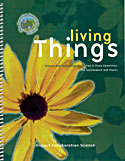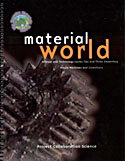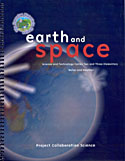Project Collaboration: Experiment in education
Project Collaboration: Experiment in education McGill University
User Tools (skip):
Project Collaboration: experiment in education
Teachers in English elementary schools across Quebec have some fresh science materials to go with the new curriculum this year — and they stem from a project that took place in McGill's science education laboratories. Over a three-year period, teachers from across Quebec worked with McGill graduate students to explore science learning and develop hands-on classroom activities.
Called Project Collaboration, the endeavour was funded by a $670,000 grant from Lucent Technologies Inc., which invited universities worldwide to submit projects to help improve science education. Of the 11 grants awarded, McGill University was the only Canadian recipient.
Education professor Brian Alters, director of McGill's Evolution Education Research Centre, was the project director. "The idea behind the project is not too profound," he admits, "but no one had ever done it before." Usually, he explains, school science materials are either developed by teachers and then validated by scientists, or developed by scientists and then validated by teachers, or developed by education professors and then validated by scientists and practising teachers. "So we thought, what would happen if you could get the scientists, teachers and university professors all working together, from the very first moment?"
From the onset, Alters sought the cooperation of the province's nine English school boards. A total of 138 teachers from 100 different elementary and secondary schools participated, alongside 52 science and 53 education graduate students (representing 28 university departments).
Theory meets reality

Alters recalls watching the teams at work. "The scientist would say, 'Here's the science, this is the way it's properly done.' The education researcher would say, 'Yes, but the average elementary school student doesn't think that way. It should be done like this, this way has been tried before.' Then the teachers would come in and say, 'Wait a minute. We can't do that in a 25-minute period, given a zero school budget.'"
Donna Sinclair, who teaches a combined Grade 5-6 class at Sainte-Foy Elementary School, found that having graduate students and teachers working together was a great combination. "We (teachers) were already out in the field and had definite ideas about how things work in a classroom, but they (science graduate students) had a knowledge base that we could just tap into."
Teams met for 10 full days in McGill's science teaching laboratories over the space of a few months, alternating between two weeks in the lab and two to four weeks off, when teachers would test the activities in their classrooms.
Constructivist approach

Alters also enlisted the support of the Quebec Ministry of Education (MEQ), which provided several resource people who devoted many hours to the project. This was of particular help since the activities created had to reflect the latest education reform — in particular, the educational theory of constructivism.
John Allen, the project manager, taught high school science for 35 years and teaches part-time at McGill. He explains what a constructivist approach might look like in a classroom: "The teacher capitalizes on something that's happening in the world and brainstorms with the students. The students provide as many ideas as possible. The teacher collects these ideas on the board, without passing judgment, then looks for commonality. The class is divided into groups, and the students begin investigating, researching and discovering all they can about this group of ideas."
Content is learned as students seek answers to their questions, drawing from several disciplines at once. "In the end, students often learn more than they would studying a traditional textbook, because they are actively involved in acquiring that knowledge," Allen explains.
He believes one of the main benefits of the project was the professional development of teachers. Lynn Bourdeau, then teaching Grade 6 French immersion at Our Lady of Pompei, agrees. "At the time, I thought it would be good way to find out what the reform was all about and have some practice in creating new learning materials. Now I have a better understanding of what I'm expected to do."
The activities produced have been compiled in raw form in a 1406-page book and on CD-ROM, titled Project Collaboration: One Large Experiment. However, Alters stresses that the book was not the goal of the project. "The point of the grant was to get these groups working together and find out what happens. That was the experiment. The book is simply a documentation of what they came up with."
The project also led to the creation of three teaching manuals for elementary school. Donna Sinclair was one of two teachers hired by the Learning Materials Centre, a partner organization of the MEQ, to write them. "We used many of the ideas from Project Collaboration, but had to adapt them to the (final version of the) Quebec Education Program," she said. The manuals provide teachers with a model for using a constructivist approach to teach science. They are: Material World: Simple Machines and Inventions; Earth and Space: Water and Weather; and Living Things: Environment and Plants.
Lasting impressions

Project Collaboration has also spawned other research projects. Physics professor Richard Harris was curious to see what impact the experience would have on science graduates' perceptions of teaching.
He asked participating science graduates to fill out a questionnaire before and after the project, and conducted one-on-one interviews. While he is still analyzing the data, some general characteristics are already clear. "There is a whole range of perceptions: from those who saw absolutely no connection between what they were doing in terms of the primary school classroom and their potential or actual careers as teachers at a university, and those who were really excited at having discovered that there was a language and context in which they could develop some of their latent ideas about teaching."
Shaily Rahman, currently finishing an MSc in Marine Geochemistry, had always been interested in interdisciplinary ways of teaching. She found the approach used in Project Collaboration was very different from what she had encountered before. "It was more learner-centred," she said. The activity her group created had an environmental focus. "We started out trying to show kids what was in water," she explained. Since it was January, the kids began by collecting buckets of snow. "They thought snow was very pure, but when they melted it, they saw it was full of debris." The students then looked at ways to purify it: How is water purified in nature? How can we purify water ourselves? "They collected rocks, sand, pebbles and straw and created their own filtration systems. And they had to keep a log book, like real scientists."
